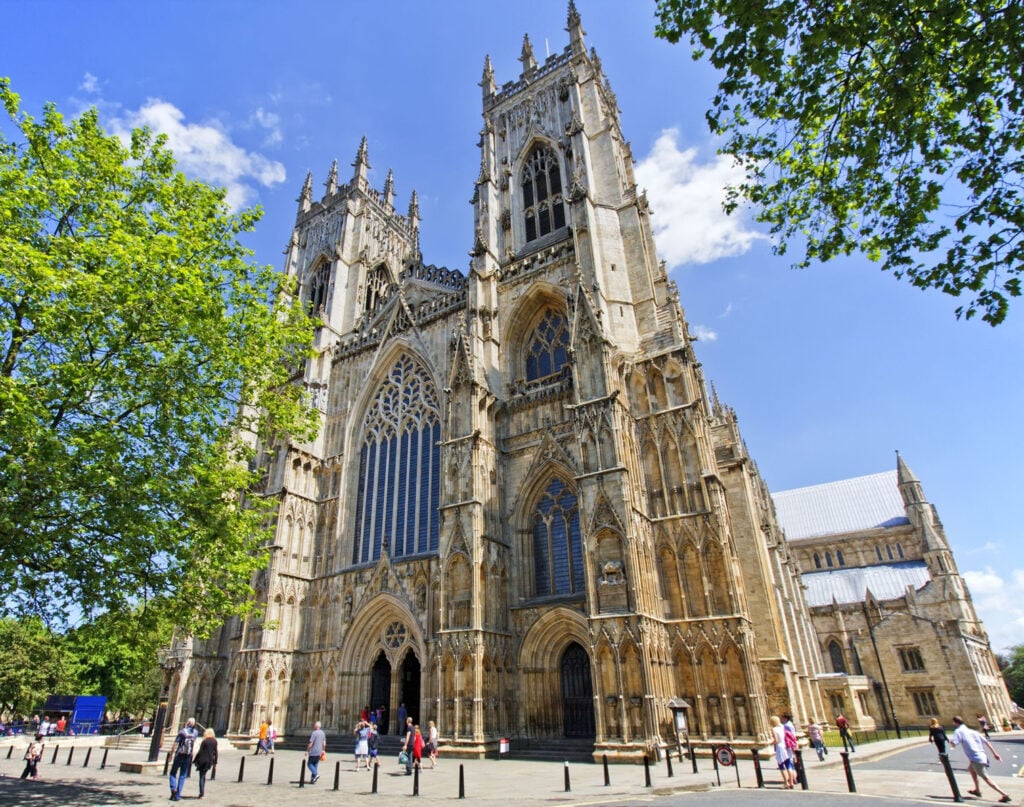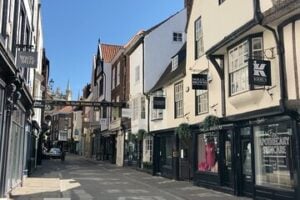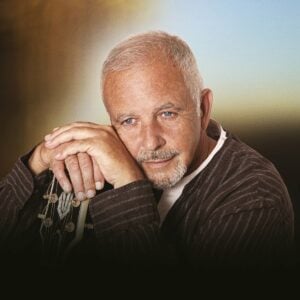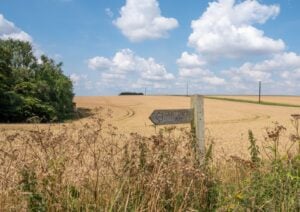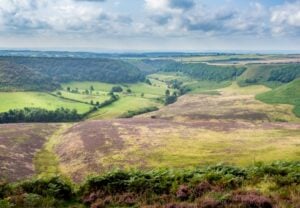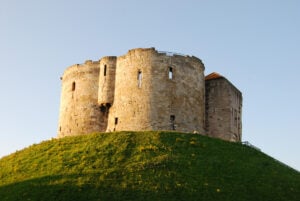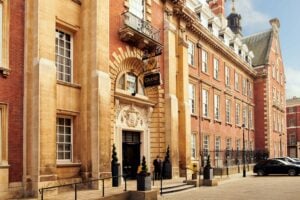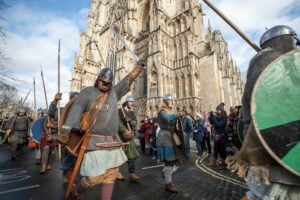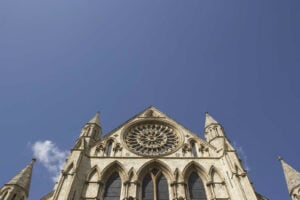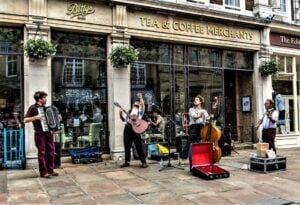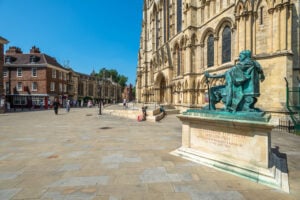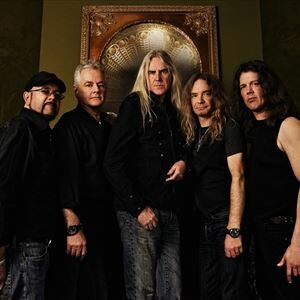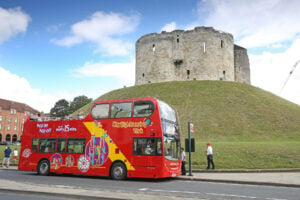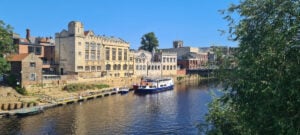York, a city where history and modernity intertwine seamlessly, offers a treasure trove of experiences to the international visitor.
This enchanting city boasts a rich tapestry of history, set against a backdrop of contemporary cafes and diverse cuisine, making it a unique destination that captivates the imagination.
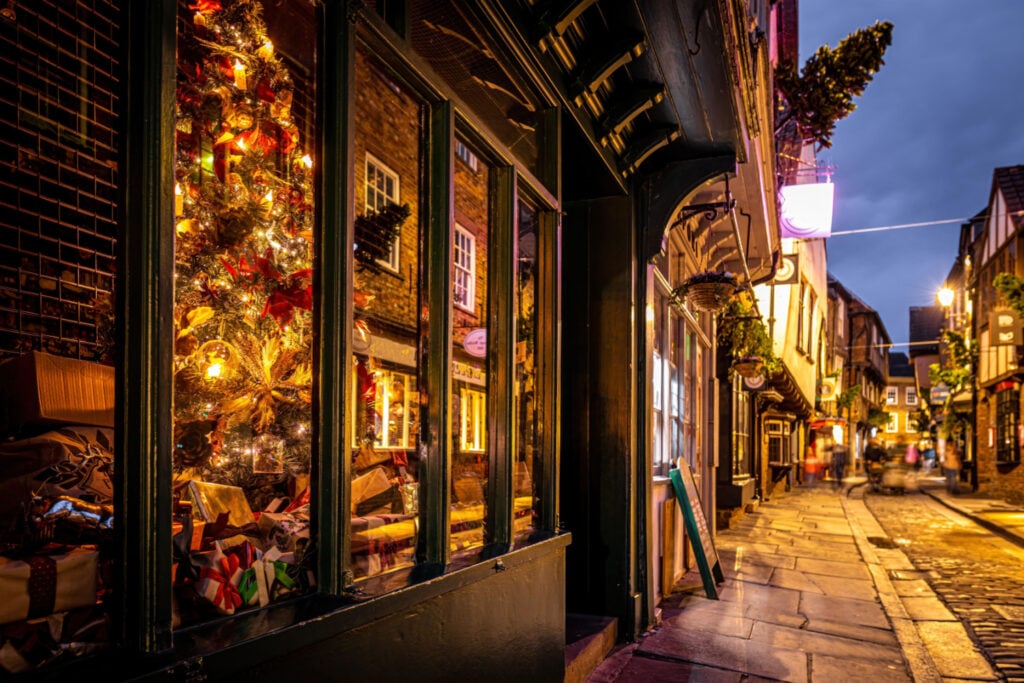
Once the seat of Roman and Viking rule, this city is a living museum, crowned by the awe-inspiring York Minster, a masterpiece of Gothic architecture.
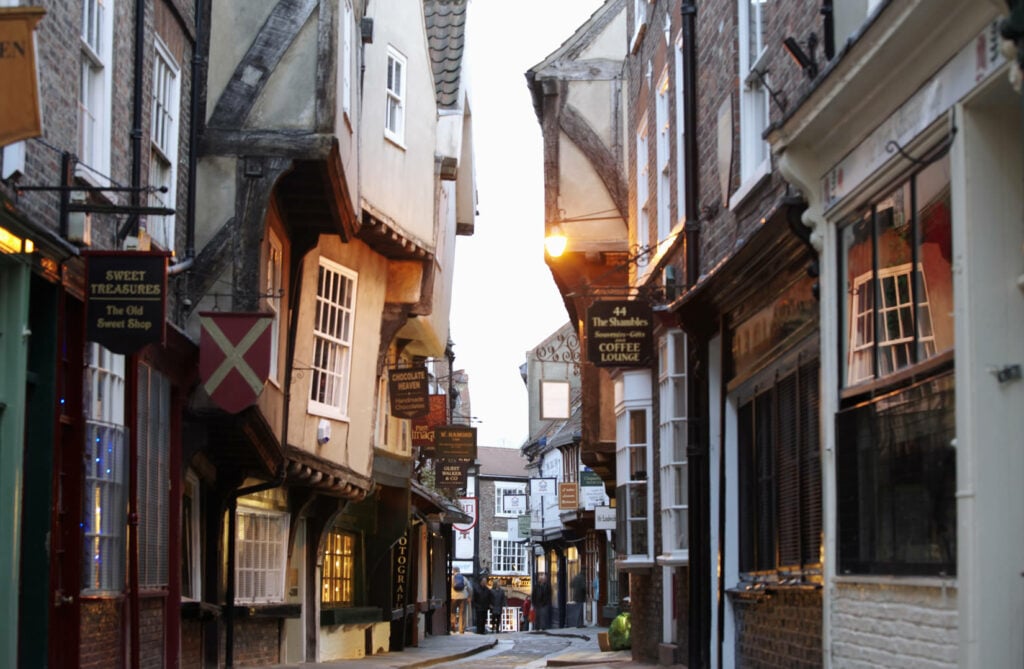
Stroll through the medieval cobbled lanes and immerse yourself in the deep history that permeates every corner of York.
York is a vibrant cultural melting pot, home to world-renowned chocolatiers who have crafted some of the globe’s most exquisite chocolates. Venture into the narrow snickets, where tales of ghosts and centuries-old stories add an air of mystery to your exploration.
Table of Contents
Discover York
Discover York, a city where every turn reveals a new chapter of history, and every street invites you to experience a blend of the ancient and the modern. Welcome to a place where the past is always present, and the memories last a lifetime.
Hotels in York
Browse hotels in York – for the full listing, click here.

Holiday Inn Express York, an IHG Hotel
Malton Road, York, YO32 9TG, United Kingdom
Holiday Inn York, an IHG Hotel
York Racecourse, Tadcaster Road, York, YO24 1QF, United Kingdom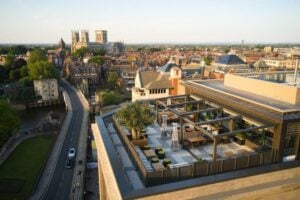
Malmaison York
Yorkshire House 2 Rougier Street, York, YO90 1UU, United Kingdom
Sandburn Hall
Scotchman Lane Flaxton, York, YO60 7RB, United Kingdom
Novotel York Centre
Fishergate, York, YO10 4FD, United Kingdom
Moxy York
Black Horse Lane, York, Y01 7NE, United KingdomApartments in York
Whether you’re studying, performing or working in York, an apartment can give a little more privacy than an hotel room:

City Apartments – Reubens Court
City Centre, Bishophill Junior, York, YO1 6LU, United Kingdom
#Huge Master Suite #Self check in #Very central!!!
8 Popeshead Court, York, YO1 8SU, United Kingdom
Clearly Apartments Bootham York
62 Bootham Crescent, York, YO30 7AH, United Kingdom
Aspire Apartments York
Apartment 4, Aspire Building 31 Bootham, York, YO30 7BT, United Kingdom
St Johns Mews
Garden St, York YO31, UK
Fern
Penley’s Grove St, York YO31, UKAttractions in York

Lost Earth Adventures
3 New Street, York, North Yorkshire, YO1 8RA
Visit The National Railway Museum, York
Leeman Road, York, North Yorkshire, YO26 4XJ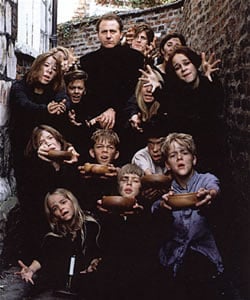
The Original Ghost Walk of York
Nightly 6.30pm & 8.00pm From The King’s Arms, Ouse Bridge, York, North Yorkshire, YO1 9SN
The Web Adventure Park
Wigginton Road, York, North Yorkshire, YO32 2RHBrowse more attractions in and around York here.
Events in York
Take in a show at The Barbican, or catch any number of different comedy, sporting or musical acts in the city:

Gary Louris (Of the Jayhawks) at The Crescent, York
8 The Crescent, York, YO24 1AWDate & Time:
July 20th, 2024 8:00pmYork Inspiration
Find some inspiration from our content about York.
York on the Map
As the name does imply, York is a central element of Yorkshire, and it’s bang in the middle of the whole historic region, sitting in the fertile, flat Vale of York.
Getting to York by car, there is the A19 heading straight out of the city, via Thirsk, Middlesbrough, and then Sunderland and Newcastle. You can also easily reach from North or South via the A1 motorway, by coming off at junction 47 and travelling the pleasant drive along the A59 – the road which continues on through Harrogate and off West towards Skipton.
Travelling to York by Rail
There’s a main line train station right in the city centre of York, which is right next door to some excellent hotels, such as the Principal Hotel and the York Grand which are both within sight when you exit the station.
You can find York right at the heart of the action in the Northern network rail map, below.
York is home to the fantastic – and free – National Railway Museum which is a hit with young and old, which gives a big clue how important railways are to the city.
York Mini Guides
Any visitor to York will tell you there is such an amazing array of things to do and see, that you need to take a breath and spend your time. For this reason, we’ve broken York down into a series of mini-guides focussing in on specific elements of the walled City to allow you to take the ancient streets in your stride. Also see our page on things to do in York with kids.
AccessAble York
Discover accessible places to go in York. If you need additional support during your stay in York there are a range of services to help you with your needs.
York Fact Pack
- York is a historic walled city located in North Yorkshire, England.
- It was founded by the Romans in 71 AD and was called Eboracum.
- York was once the capital of the Roman province of Britannia Inferior and later the capital of the Kingdom of Northumbria.
- The city played an important role in the Viking era, with the Viking city of Jorvik established in the 9th century.
- York was a major center of the wool trade in the Middle Ages, with the city’s wealth built on the wool industry.
- The city is home to a number of historic landmarks, including York Minster, Clifford’s Tower, and the medieval city walls.
- York Minster is one of the largest Gothic cathedrals in Europe and is the seat of the Archbishop of York.
- Clifford’s Tower is a 13th-century castle keep that was once part of York Castle.
- The city walls are the most complete medieval city walls in England, with a total length of 3.4 kilometers.
- York is also home to a number of museums, including the Jorvik Viking Centre, the York Castle Museum, and the National Railway Museum.
- York has a population of around 200,000 people.
- The city is situated on the River Ouse, which flows through the city center.
- York is well-known for its narrow streets and snickleways, which are small, narrow alleys that criss-cross the city center.
- York is a popular tourist destination, with millions of visitors each year.
- The city hosts a number of cultural events throughout the year, including the York Festival of Food and Drink, the York Literature Festival, and the York Christmas Market.
- The University of York is located in the city and is one of the leading universities in the UK.
- York has a range of transport links, including a mainline railway station and a small airport.
- York is one of the most haunted cities in the UK, with a number of ghost tours and spooky attractions.
- The city has a range of sporting facilities, including the York Racecourse and the York City Football Club.
- York has a long history of brewing, with a number of breweries and pubs in the city.
- The York Mystery Plays, a cycle of medieval plays performed by the city’s guilds, are still performed in the city today.
York image gallery
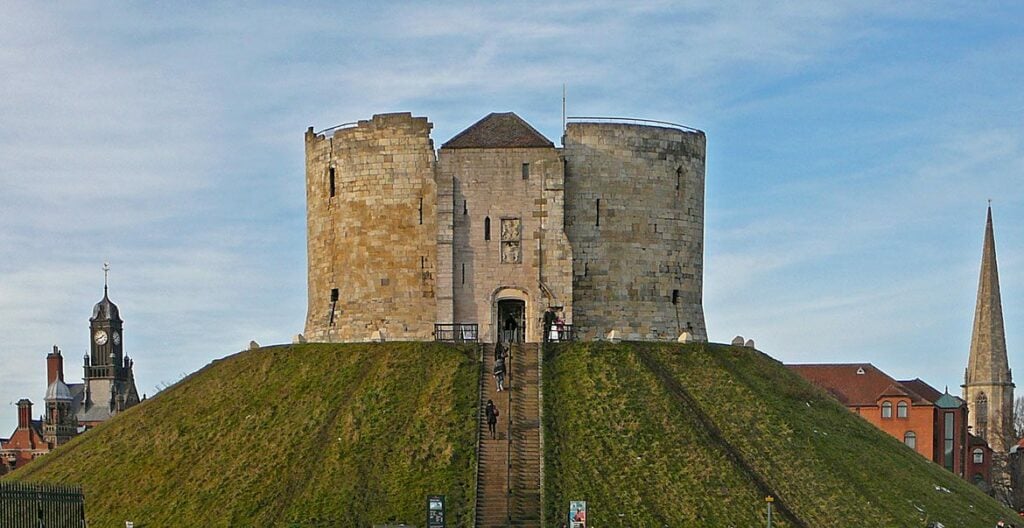
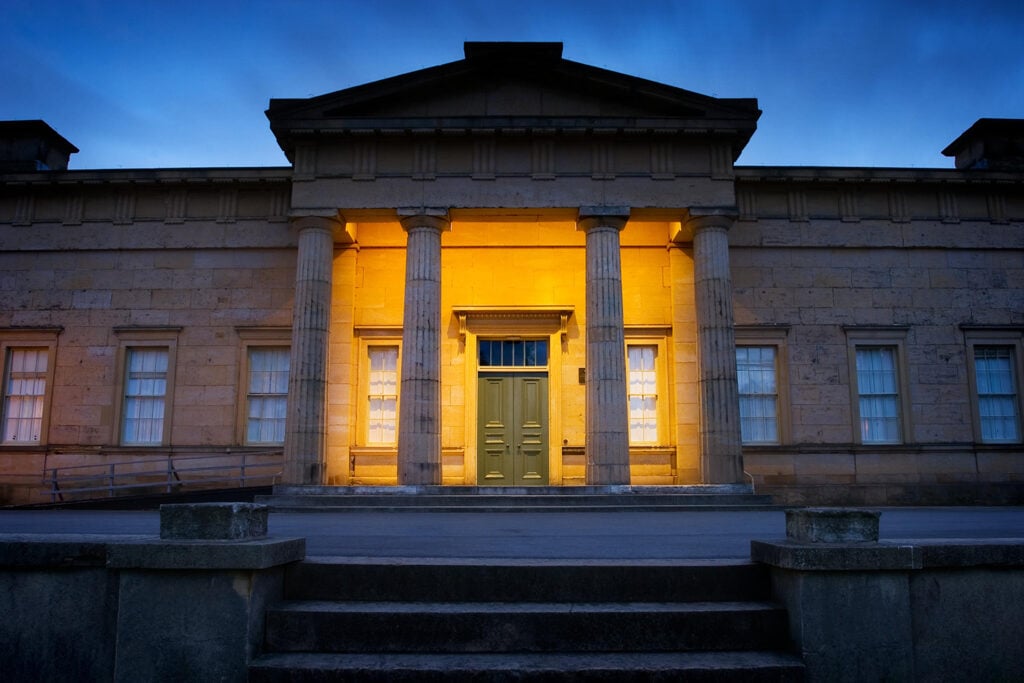
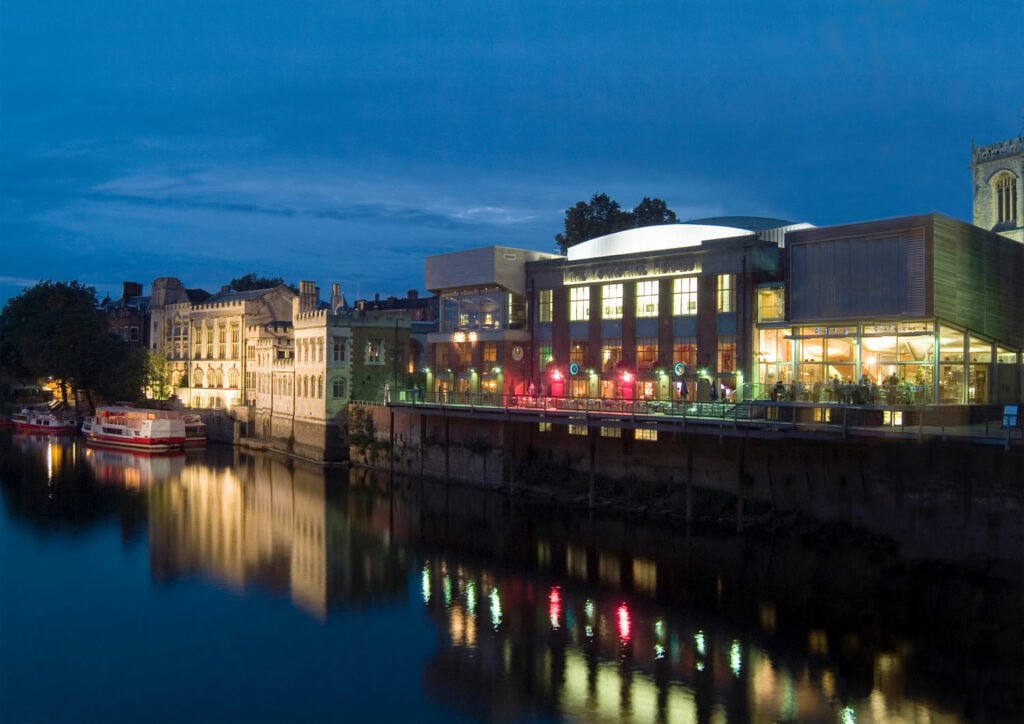
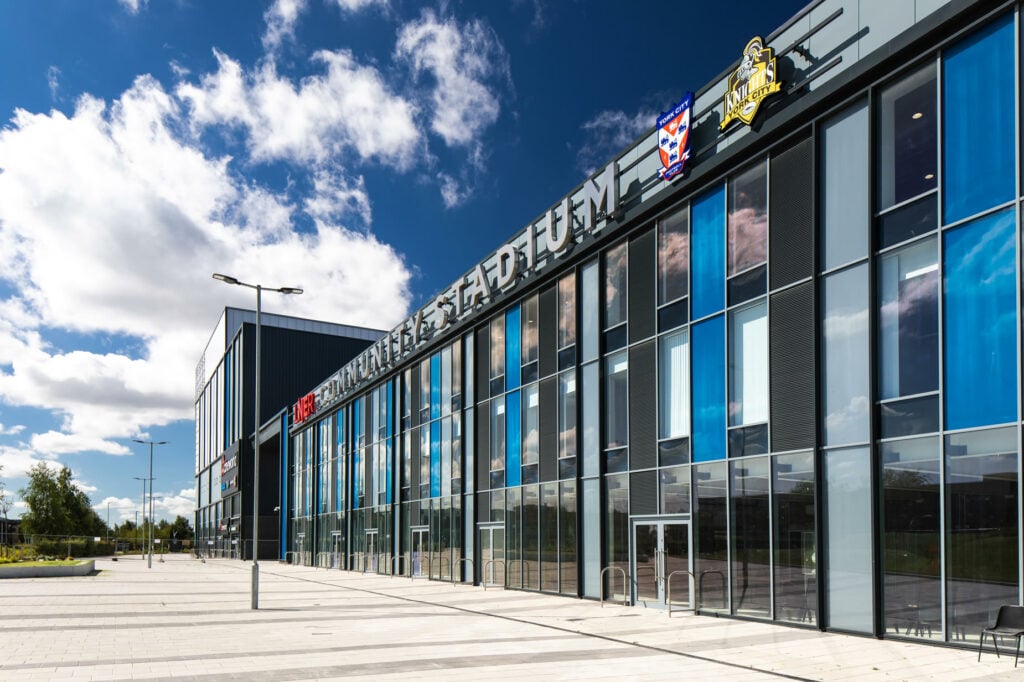
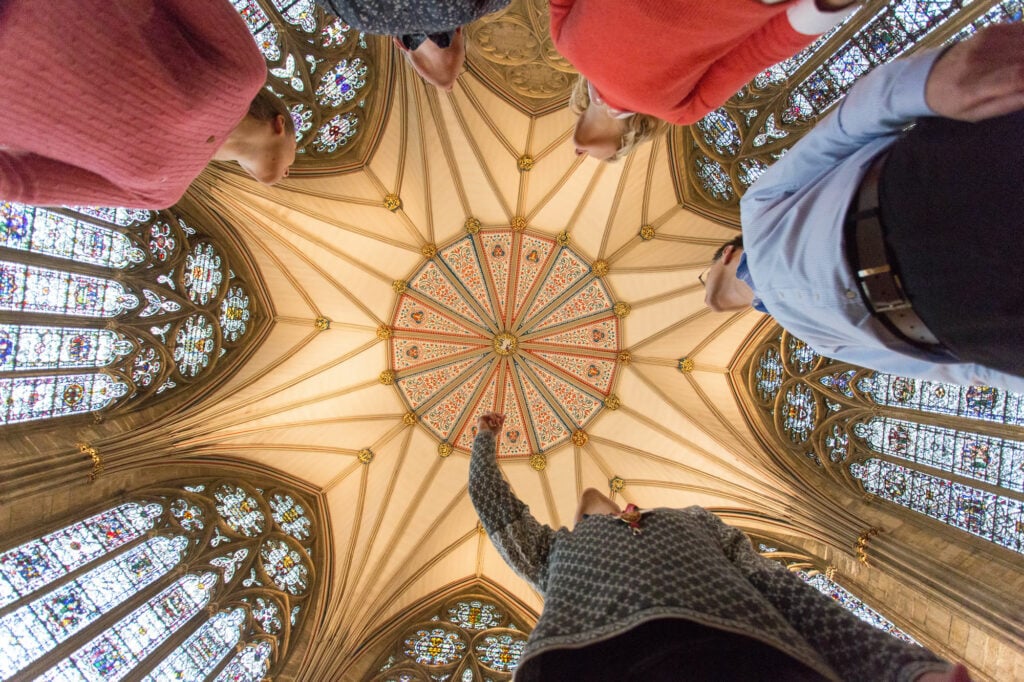
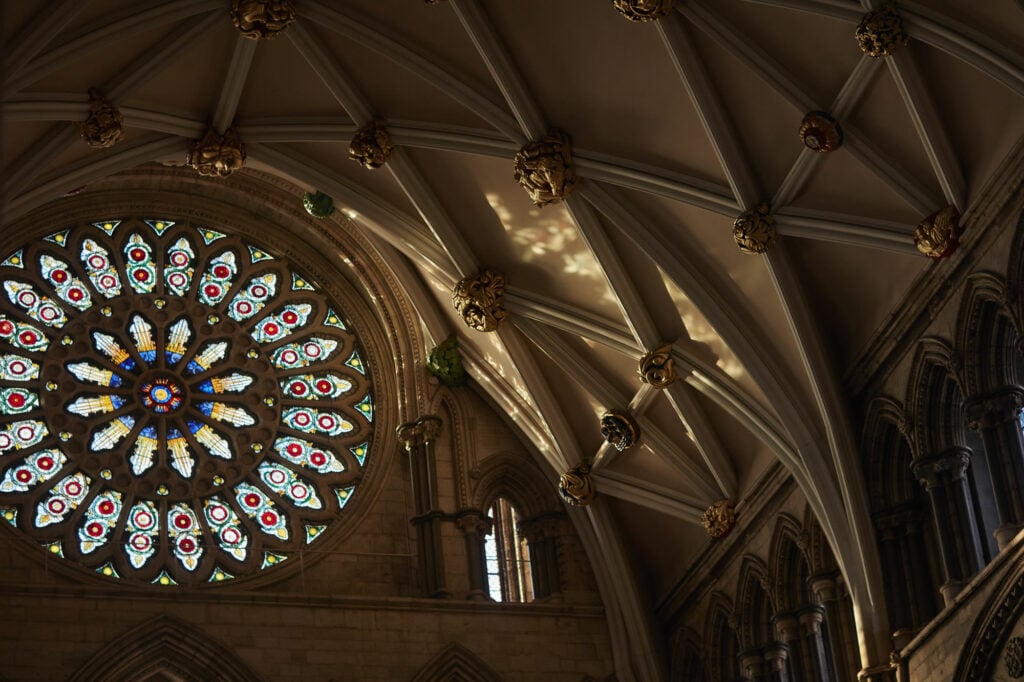
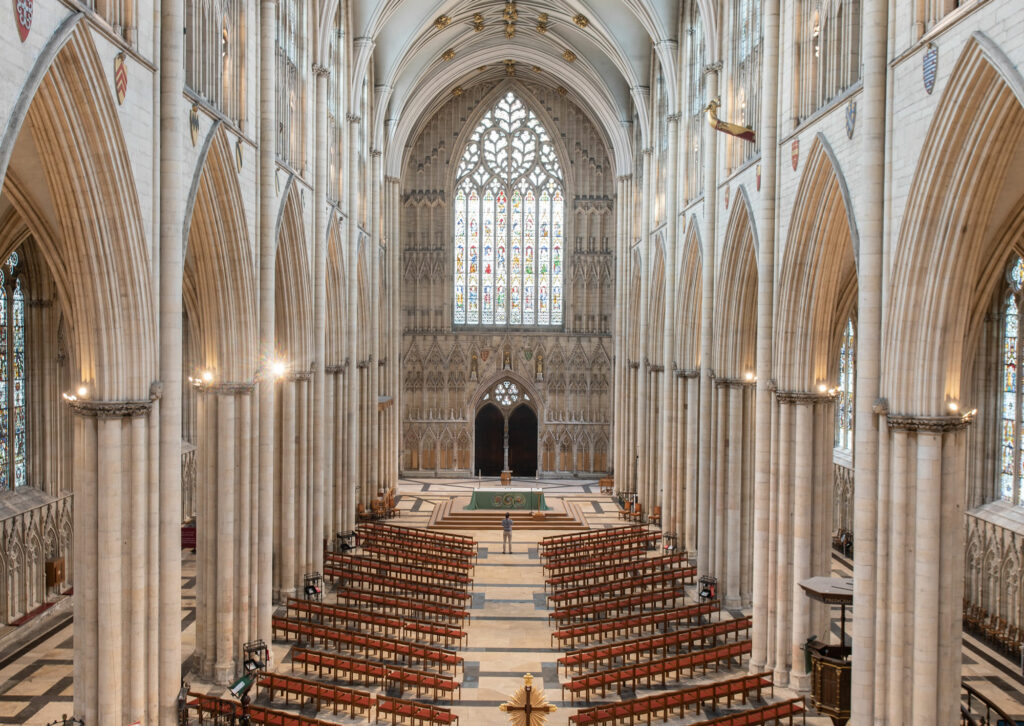
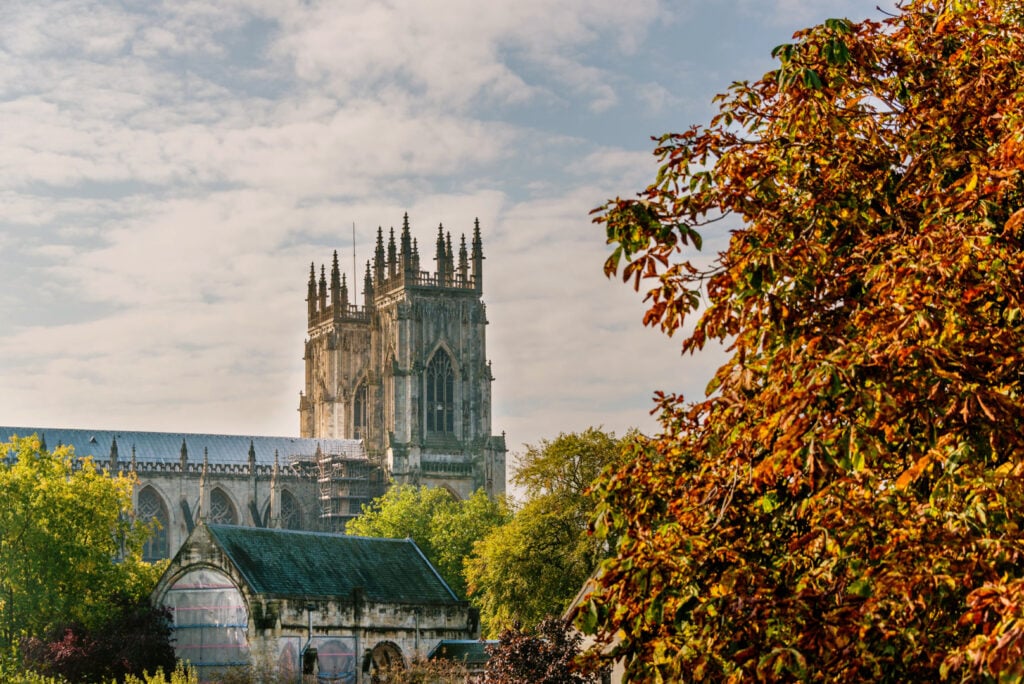
York FAQ’s
I am traveling from Australia and am enquiring about bus travel around yorkshire. I will be staying in York for a week and would like to travel out into the surrounding areas. Do you have day tripper tickets ? Please give me any links.
York runs a “Tap on Tap off” system which gives discounts automatically if you use the same payment method and remember to tap on the way off the bus: https://www.firstbus.co.uk/york/tickets/ticket-easy/tap-tap
There’s some other tickets & passes information here: https://tidd.ly/3XUpekV
I am a fairly good walker and would like to know of outstanding walks both in the city and surrounds.
All our walks are here: https://www.yorkshire.com/walkshire/
What are some popular tourist attractions in York, North Yorkshire?
Some popular tourist attractions in York include the York Minster, the Jorvik Viking Centre, the National Railway Museum, and the York Castle Museum.
What is the best time of year to visit York, North Yorkshire?
The best time of year to visit York is during the summer months (June-August) when the weather is mild and there are many outdoor events and festivals taking place.
What is the history of York, North Yorkshire?
York has a rich history dating back to Roman times, and was an important city during the Viking and medieval periods. It was also a major center of the wool trade in the 16th and 17th centuries.
What are some popular food and drink options in York, North Yorkshire?
York is known for its traditional English pubs, as well as its tea rooms and bakeries. Some popular local dishes include Yorkshire pudding, fish and chips, and parkin (a type of gingerbread).
How can I get around York, North Yorkshire?
York is a compact city that is easy to explore on foot. There are also buses and taxis available, as well as a train station that connects to other cities in the UK.
Where Next?
After visiting York, North Yorkshire, there are plenty of other places to explore in the area. Just a short drive away is the stunning Yorkshire Dales National Park, where you can hike through picturesque countryside and take in breathtaking views. The charming market town of Harrogate is also worth a visit, with its elegant architecture, beautiful gardens, and famous Betty’s Tea Room.
If you’re interested in history, you might want to head to the nearby city of Leeds, which has a rich industrial heritage and a number of fascinating museums and galleries. Alternatively, you could explore the rugged coastline of North Yorkshire, with its dramatic cliffs, sandy beaches, and quaint fishing villages. Whatever your interests, there’s plenty to see and do in this beautiful part of the country.
